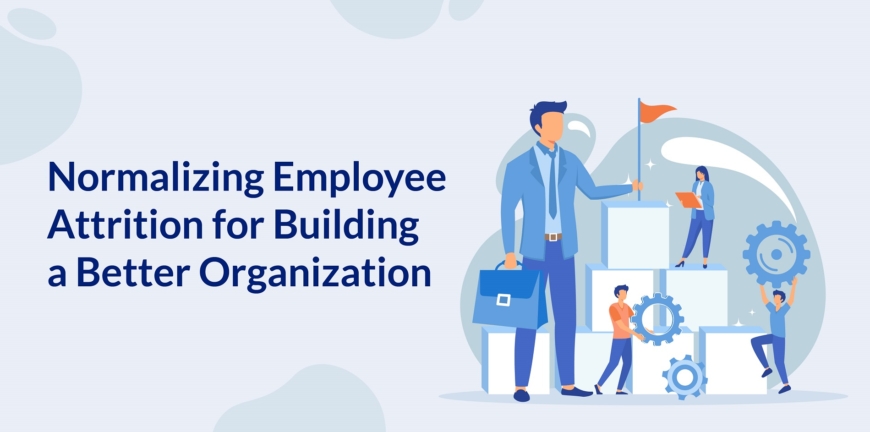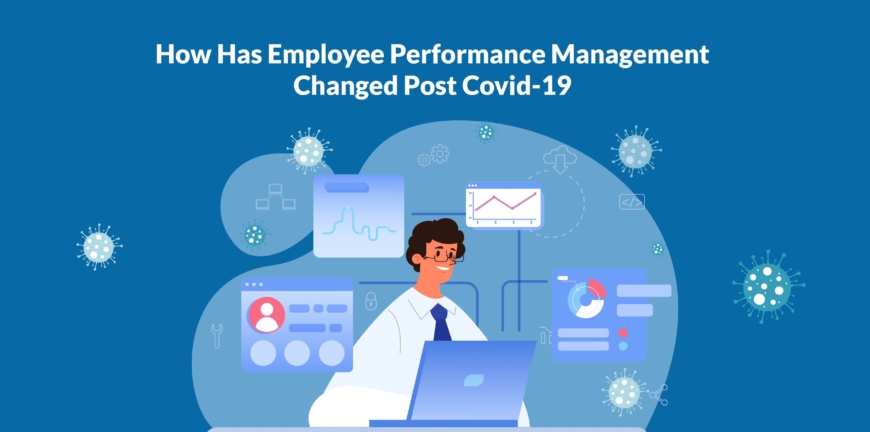
Normalizing Employee Attrition to Build a Better Organization
09/05/2023
How Can an RPO (Recruitment Process Outsourcing) Enhance your Hiring Capabilities?
22/05/2023The pandemic impacted the way people live and work. Remote or hybrid work is the norm in several organizations worldwide, and while its effectiveness is up for debate, there is no denying the fact that it helped organizations adapt to the changes caused by the pandemic . The pandemic also changed how performance is measured and improved upon at all levels in the organizational hierarchy.
Setting a few SMART goals with your manager and revising them to meet current requirements is just not going to help. A bunch of annual or even monthly reviews also do not qualify as great performance management.
Ongoing support, training and development of the employee at every stage of their career journey is effective performance management. It is all about continuous improvement through conversations and feedback. Performance appraisal is just a piece of the larger puzzle that is performance management. And when you pick up the pieces of the puzzle, and put them back together, you can see how the pandemic has changed performance management in organizations.
-
Reworking the performance matrix
The kind of performance expected from employees has been altered by Covid-19. The performance matrix that stressed work hours and meeting deadlines needs to be rethought, as it is possible that deadlines may need to be more flexible depending on employee health. Other critical components such as actual productivity metrics and feedback from peers need to be added in addition to comments from the managers themselves. And working extra hours is not exactly desirable or a marker of quality.
For instance, one CIO said that he used activity tracking to identify the employees who were working extra hours. He requested them to shut down earlier, while adjusting the workload they had, stressing more on quality than quantity. This kind of redistribution of the workload also helps to mitigate any wellness risks that employees may face.
-
Setting agile goals
As companies got leaner during the pandemic, their priorities changed. They realized how performance is directly impacting business metrics, and that it needs to be at the center of the conversation, as should be employee health. The employee and the manager must meet monthly or at least quarterly and co-create goals without sacrificing employee motivation and work-life balance. Both employee and manager must remain accountable and take full responsibility for achieving the goals. A PMS platform that supports dynamic goal setting could be the answer.
FAIR (Framework for linking of Appraisals, Incentives and Rewards), though it seems like a performance appraisal system, is actually a performance management system used by L&T. The key areas of performance and the goals identified by the business are cascaded to employees digitally through FAIR. Several layers of checks ensure that the process is error and bias-free. The ERP used aligns the employee goals to the business goals of L&T
This allows for dynamic goal setting, beneficial employee-manager conversations around performance, and real-time event-based feedback. The goal library that is a part of the PMS also provides simple SMART goals that can be modified based on key result areas (KRAs) and key behavior indicators (KBIs).
-
Tracking progress frequently but with transparency
As more and more employees moved to a work from home setup during the pandemic, it became imperative to monitor how employees work on a weekly basis, if not a daily one. Technology can be a top enabler in this regard, and modern tools can track employee focus and daily productivity, while providing a platform to raise issues that they may face at work with their peers and their manager. When you are monitoring your employees, please be transparent and let them know they are being monitored. Be especially careful in countries like the UK, where it is considered an invasion of privacy.
Barclay’s used monitoring tools to assess how long their employees were away from their desks and the time they took to perform certain tasks. Under GDPR, an organization can monitor its employees only if it satisfies the conditions defined under the words ‘transparent’ and ‘necessary’. Barclay’s is now facing a fine of $1.1 billion because its measures were neither transparent nor necessary. Is there another con to employee tracking?
Tracking software may be necessary for performance management, but its issues and limitations need to be recognized, says Wayne Turmel, a co-founder of the Remote Leadership Institute based in Indianapolis. Turmel opined that it can be wildly misleading, as the software allows you only to measure basic activities and does not offer any context. For instance, a person may be typing, but you may not know what, or a person may be away from the system, but you may not know why. So, track your employees, if you must, but only with consent and refrain from using it as a basis for making any far-reaching changes.
-
Providing personalized and constructive feedback
With the pandemic posing a challenge to employee health and productivity, each person needs the other’s support. Managers need to think on their toes, and they can play a key role in guiding and pushing employees into a growth trajectory by providing the right training and timely feedback, but they need the cooperation of their employees. Again, the feedback can be positive, negative or constructive. Negative feedback is also crucial, as it helps employees self-correct, provided it is objective, actionable, and employees are willing to make the changes. It is constructive feedback, and most importantly constructive action, that gets the cake.
An example is that of Ford Motor Co. that has now taken a more flexible approach to handling underperformers. Ford employs 30,000 salaried workers in the USA and the underperformers were automatically assigned to a PEP (Performance Enhancement Plan). If they did not meet expectation after the PEP, they faced termination. They weren’t offered the option of a severance package, but that changed in November 2022.
The Wall Street Journal reported that they will now have the option to end on an amicable note with a severance package or go into performance enhancement. Management consultant Liz Weber called this more personalized and empathetic approach a “very gracious” move that Ford supports its employees, especially underperformers in white-collar jobs.
-
Rewarding employees for a work well done
The pandemic forced companies to freeze bonuses and other incentives that brought out the best in their employees. But we are past that now. To restore the faith that employees have in the management, employees must be rewarded fairly for the work they do, accommodations must be made at work which help support it and improve their productivity, and achievements must be highlighted and shared, setting an example for the future of work in the organization. These rewards need not only be based on performance but to address certain conditions at work, and when this is done, proper communication with the employees is essential.
Avnish Anand, the COO of Caratlane, an everyday wear jewelry company said that they were always focused on customers, but lately they realized their employees must be rewarded too. Internal surveys and focus group discussions that involved employees revealed a story. Avnish said that young people like to be heard and there were requests like breakfast for people who start their shifts early and foot massagers for people who stand long hours.
The working style needs to be right and comfortable enough to ensure productivity and happiness. Anand said that when they listened to their employees and made the changes, it brought about a culture of belonging. He said that in 2023, the focus of Caratlane will be on ensuring internal communication is top-notch. If they called an employee and they were unaware of an incentive policy that had just been introduced, then the company would know that it needs to work a lot more on its messaging.
This is how the pandemic has altered the performance management landscape in several organizations across a stratum of industries, both in India and abroad. If you update your performance management system with these five tips, then you too can ensure that the employees stay on track, are productive, and leave their work every day wearing a smile. If you feel you need a hand with performance management or with any other kind of workforce management, talk to Alp Consulting.




